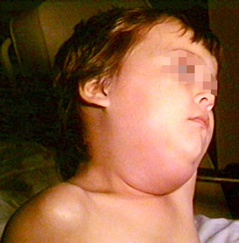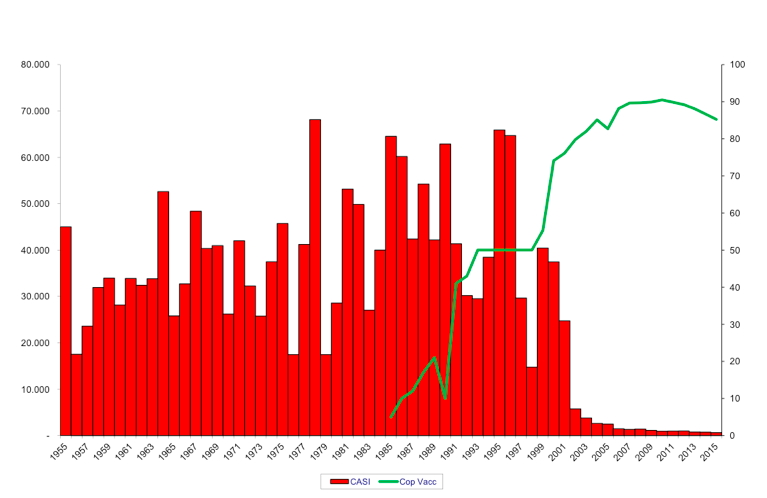Parotitis, known since ancient times by the popular name of "mumps", is an infectious and contagious disease that is localised in various organs and tissues, but typically affects the upper respiratory tract (pharynx, larynx and trachea) and the salivary glands .
The agent responsible is a virus called mumps virus.
Transmission routes
The mumps virus spreads through droplets of saliva emitted into the air by the patient or through direct contact with material contaminated with infected saliva. The virus can be found in saliva for 1-6 days before the first symptoms appear and for the duration of the disease. During this time the patient can transmit the disease to the people around him/her.
Symptoms
After an incubation period that can last from two to four weeks (on average 16-18 days), the disease starts with non-specific symptoms such as slight fever, malaise, loss of appetite and headache.
Within 2-3 days the parotid gland increases in size, causing earache and pain upon palpation of the angle of the jaw (parotid area). The inflammation of the parotid glands gives the patient's face the characteristic appearance from which the name "mumps" derives (from the 16th century term meaning “grimace”). Usually one parotid is affected first followed by the other after a couple of days, but it is not uncommon for only one of the two to be involved. In about 10% of the cases the other salivary glands (submandibular and sublingual) are also affected.
The general and local symptomatology regresses within a week; if no complications arise, the disease resolves completely within 10 days.

Complications
In children, mumps is considered a disease with a benign course, however, it is not without its complications. These are more common if the disease is contracted after puberty or in adulthood and may occur even without the classic symptoms of inflammation of the salivary glands.
The most frequent complications are:
- Meningitis: this is observed in about 10% of patients and resolves without sequelae after 3-10 days.
- Encephalitis: this is observed in about 0.06-0.03% of cases; it rarely leads to death, but it can have permanent consequences.
- Orchitis (inflammation of the testicles): this is the most frequent complication in post-pubertal males, in fact it can affect up to 38% of males in this age. It is a very painful inflammatory disease characterised by the swelling of one or both testicles. About half of patients with orchitis develop some degree of testicular atrophy; sterility is a rare event.
- Oophoritis (inflammation of the ovaries): this affects about 5% of females who contract the disease after puberty. It is not associated with infertility.
- Pancreatitis: this is a rare complication (4%); inflammation of the pancreas causes the appearance of a transient and reversible increase in blood glucose levels.
- Hearing loss: affects 1 in every 20,000 patients. It is due to the direct action of the virus on the inner ear cells. It usually affects only one ear and is permanent. Mumps in children is the main cause of acquired sensorineural deafness.
Altre complicanze meno frequenti sono artrite e nefrite. Inoltre, il contagio durante il primo trimestre di gravidanza è associato ad un’alta percentuale di aborti spontanei (25%); non comporta invece il rischio di malformazioni per il feto.
Impact on the population
The pathology is endemic (ie always present in the community) with epidemic peaks occurring every 2-5 years.
Most cases of the illness occur in late winter and early spring.
Although the disease can occur at any age, it more frequently affects children aged between 5 and 10. In recent years, there has been an increase in cases in Europe among adolescents and young adults - the subjects most exposed to the risk of complications.
In Italy, since 1999, there has been a progressive increase in vaccination coverage and, in parallel, a continuous decline in the number of cases, which since 2003 have fallen steadily below 5,000 per year.




